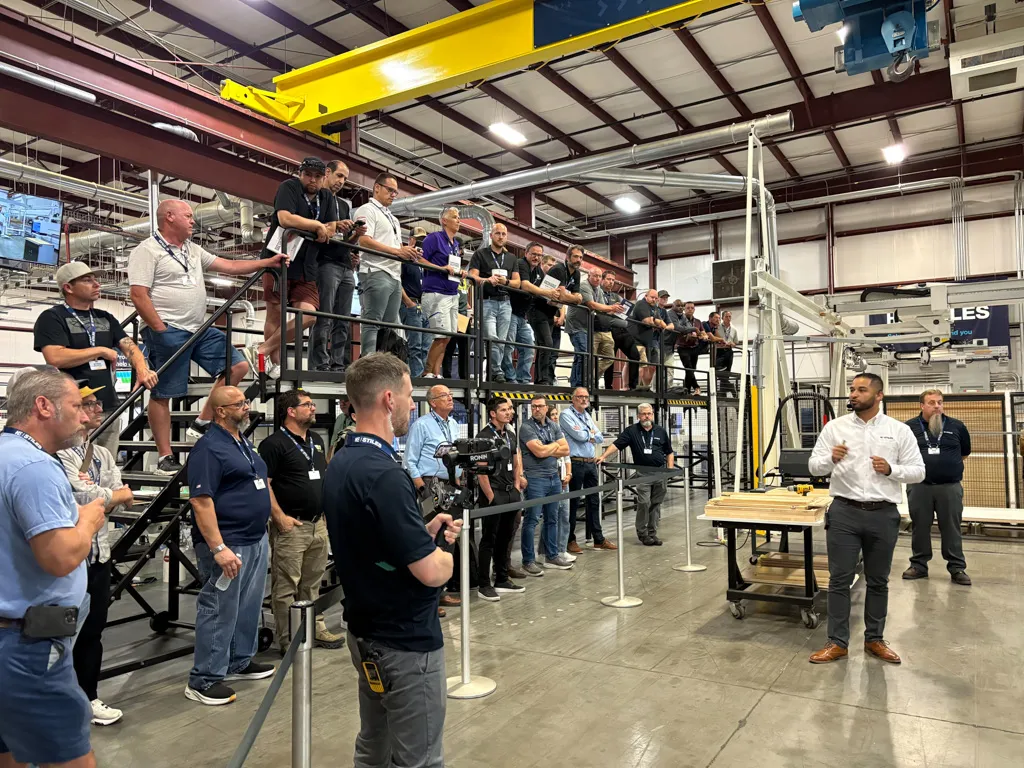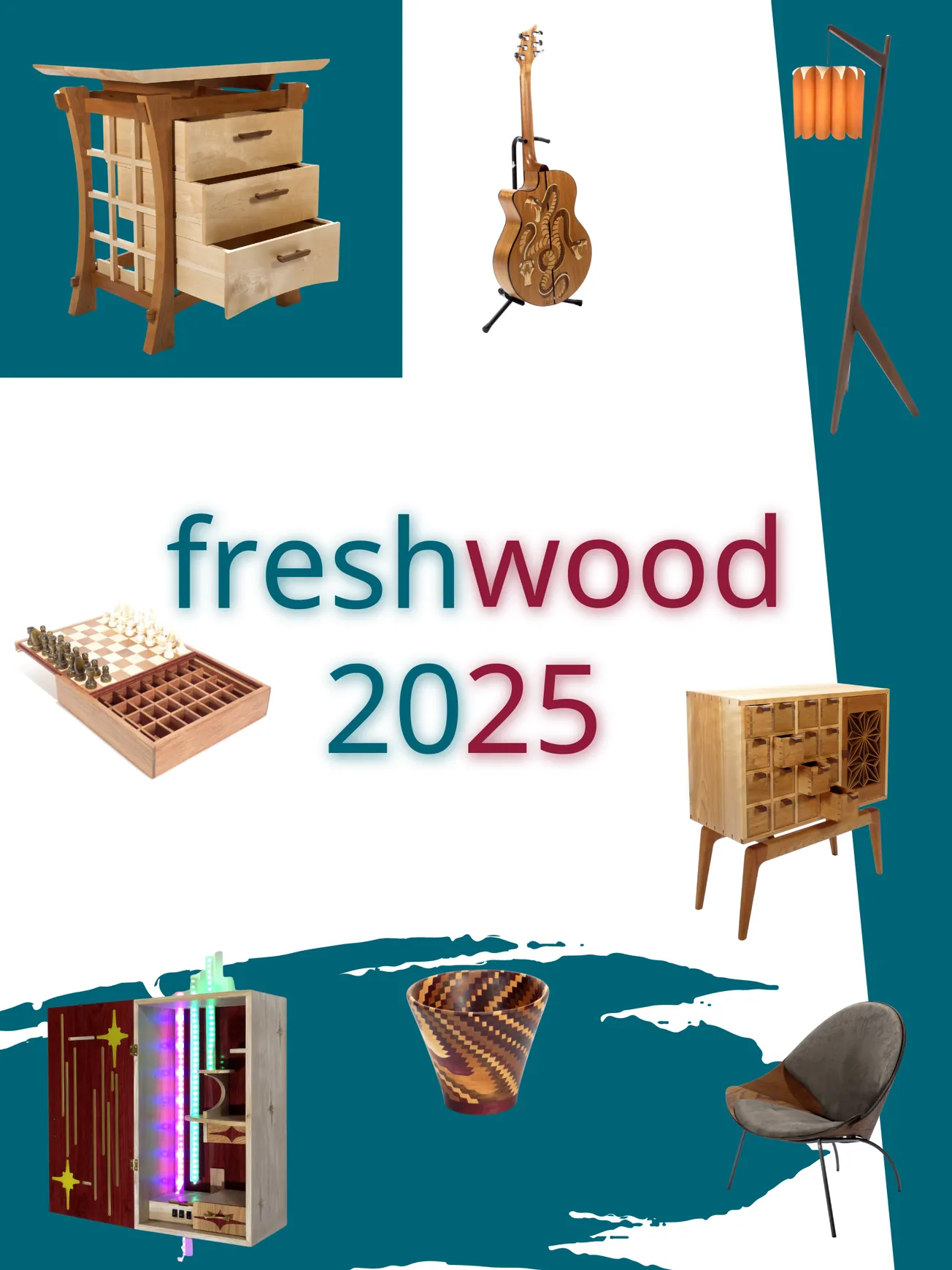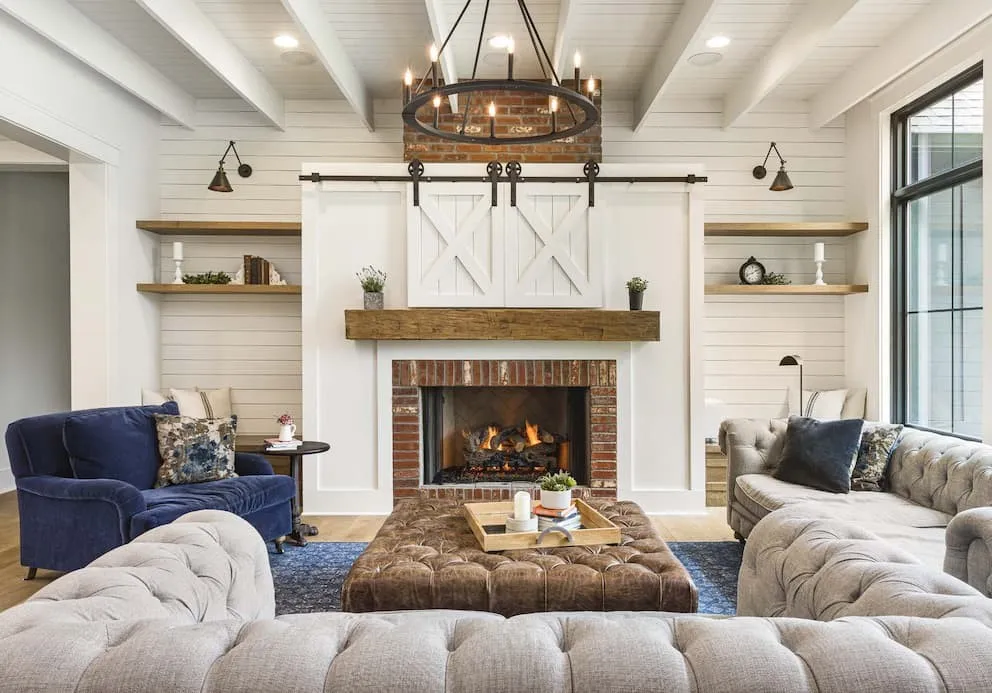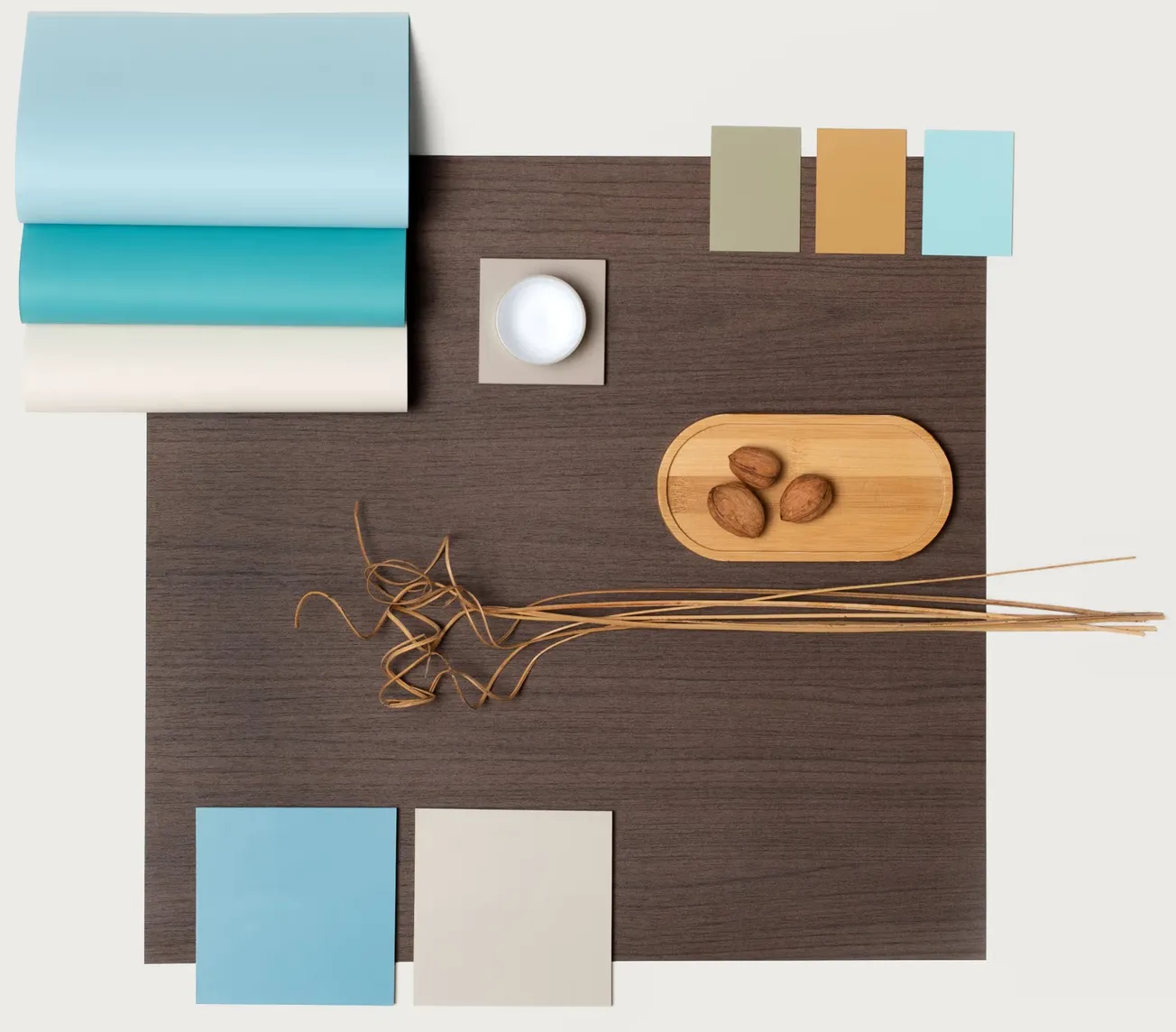Table of Contents
After measured start, Showplace moves aggressively into full-access cabinets
By Scott W. Angus
Showplace Wood Products didn’t rush into building full-access cabinets. When the company decided to make the move, however, it did so in Showplace’s customary bold way.
“The topic came up four or five years ago,” said Bill Allen, Showplace’s vice president and chief operating officer. “We were being told by our dealer base, our sales team and our suppliers that full-access or frameless construction, specifically European-style, was coming to the U.S.”
Face-frame cabinets were still king, however, and Showplace – which opened in 2000 in Harrisburg in southeast South Dakota — was a relatively new company that was recovering from the national recession.
“A lot of things happened that kept our attention moving around. Frameless was always a discussion but never a focus until about two years ago,” Allen said. “We did much better than the rest of the industry coming out of the recession, and we had recovered. Labor had stabilized. We were on solid footing.”
Showplace, where employees continually hear about learning to walk before they run, decided the time was right to move ahead with full-access cabinets.
“We thought we were in a very good position to expand our product line,” Allen said. “Our dealers were asking for it all along. The move toward transitional or contemporary styling was in full force, so we made the decision to move forward.”
That decision involved building a 60,000-square-foot facility dedicated to full-access construction featuring the latest in panel-processing equipment from Stiles Machinery.
“We do things in a bold way,” Allen said.
The company hired 65 new employees, took management and senior floor people from its existing staff and dove enthusiastically into the effort.
Showplace’s boldness goes back to the company’s start, when nine cabinet professionals agreed to pursue their vision of creating a brand that offered “the most-wanted features to the most people,” according to a brief history on the company’s website.
“But this vision also included some important differences from other brands. Like modifications that were comprehensive and affordable, often without charge. Like specialty style and finish options that were also affordably priced. Like a product offering that was complete, yet not overly complex or weighed down with too many restrictions and limitations.”
Since starting production in 2000, Showplace has expanded a half-dozen times and nearly quadrupled its space. Showplace now has three manufacturing plants – the original full-frame plant and the full-access facility in Harrisburg and a door and drawer front plant 30 miles away in Beresford. It also has two other buildings on the big and growing Harrisburg campus.
The company occupies a total of 360,000 square feet and has about 575 employees.
As documented in a book about the company titled “Built on a Handshake,” the agreement with the contractor that constructed the first plant was a simple handshake. Not surprisingly, Showplace went back to that contractor to build the new plant, which shipped its first cabinets under the brand ShowplaceEVO in January 2016.
The new plant was built as a miniature version of the original just 50 yards away. Like the original, which has seen four additions, the full-access plant will be easy to add on to when the time comes.
“We look at full access as our shooting star for growth,” Allen said. “That’s why we built the plant and staffed it the way we did. We think the market is going to grow and continue to grow.
“It’s exciting to be in my position to have that ammunition in your belt and know that’s how you’re going to be able to grow this company over the next 10 to 15 years.”
Showplace started slowly with the full-access line and is ramping up production in phases. Phase 1 involved a basic line with enough options to allow Showplace to get solidly into the market. Phase 2 added variety and styles, and phase 3, which will launch in 2017, will bring in more suppliers and offerings.
“We like to walk before we run,” Allen acknowledged. “That way, we don’t disappoint customers, and we stay true to our philosophy and that is to deliver quality products on time and complete. We built this company on that, and this is nothing different.”
Jeremy Seykora, manufacturing plant manager of the full-access facility, repeated the “walk before you run” mantra and further explained how Showplace’s measured, consistent approach pays off.
“It’s like hitting a double every time you go up to bat. Our company is good at  that,” Seykora said. “When you take the time to develop a product line based around that model, it allows you to think about what the market will need in the future and how the company will look going forward and producing those products.”
that,” Seykora said. “When you take the time to develop a product line based around that model, it allows you to think about what the market will need in the future and how the company will look going forward and producing those products.”
Seykora noted that phase 1 allowed Showplace to work out kinks. Phase 2 has involved looking at what the market wants and adding styles, such as new textures and acrylic colors, and partnering closely with panel suppliers to ensure Showplace is making good decisions about trends and demand, he said.
“2017 will bring a big phase 3, during which we will work with other suppliers and develop doors that the millennial generation really wants to see. I think frameless or full access is really where the growth is going to be,” Seykora said. “That’s why the company made the decision to put up the structure and develop a product line that is going to serve the next generation.”
Showplace makes a full range of five-piece door styles out of solid wood and MDF at its Beresford plant. At the full-access facility, it makes slab doors of textured TFL from Timber Products and exotic wood veneer. Showplace also buys kitchen-at-a-time doors in 3DL foil laminates, straight grain wood veneers and high-gloss acrylics from Northern Contours.

Showplace’s full-access boxes are 5/8-inch particleboard – and some MDF — with paper surface interiors. Framed boxes are standard 3/8-inch veneer core plywood and MDF, with upgrades to ½-inch and 5/8-inch veneer core plywood with both paper and real wood veneer interior options. Timber Products and Murphy Plywood supply plywood, while Roseburg supplies most of the particleboard. The company offers two paper options – a 30-gram maple and a 60-gram white. It buys pre-glued paper from American Adhesive Coatings of Lawrence, Mass., and laminates the panels on equipment from Black Brothers of Mendota, Ill.
“That’s the only laminating we do, and it works like a charm,” Allen said.
Hardware comes from a consistent set of suppliers. Blum provides drawer hardware and door hinges, including full extension, soft-close drawers and soft-close doors. Rev-A-Shelf and Häfele provide other accessories or kits – “the insiders,” as Allen calls them.
One development that has surprised Allen and many others is the increase in painted cabinets. Showplace’s main plant didn’t offer solid paints until 2004, and now they are 40 percent of production on framed cabinets. The full-access line came out of the gate at 60 percent painted.
Sherwin Williams is the paint supplier, and the companies have worked together to develop custom colors for Showplace’s ColorSelect program, which Allen said offers an unlimited selection.
“One day, I can be out in the factory, and I’ll see a set of cabinets going through that are John Deere green, and the next day, I’ll see South Dakota State University Jackrabbit blue and maize. I see the most amazing rainbow of colors going through our factory.”
Among the changes made to accommodate the trend is a  shift to more panel-processed substrates because they are easier to paint and they hold the finish better, he said. Showplace uses a refined MDF from Weyerhaeuser named Glacier Green.
shift to more panel-processed substrates because they are easier to paint and they hold the finish better, he said. Showplace uses a refined MDF from Weyerhaeuser named Glacier Green.
The company is adding a second paint line to the full-access facility, which is designed to hold three, while the full-frame plant has six.
Finishes are offered in Satin and Matte sheen levels, and Showplace also provides free glazing along with several premium finish options, such as Vintage, Brushed Vintage, Casual Vintage and various distressing options.
Showplace distributes only through independent dealers and has a network of some 700 dealers in all 50 states and Canada. Of those, about 250 are “very active,” Allen said.
“It’s part of our heritage. No big box stores. We will not sell over the internet. We will not sell factory direct,” he said. “We stick behind our dealer network and always will. That’s what built this business, and that’s who we rely on.”
Showplace’s most important metric is on-time and complete delivery, Allen said, and its benchmark is 99.6 percent.
Among Showplace’s active dealers is Zuern Building Products, which has four locations in Wisconsin. Lori Couperus, a cabinet design specialist at Zuern’s Watertown location, said the majority of cabinets she sells are Showplace. The Watertown location does about $600,000 a year in cabinets.
Asked why Showplace is so popular, she replied: “I think it’s for the quality and construction and the features they offer. Also, the fact that if Showplace doesn’t offer it, they’ll build it for us.”
 Couperus cited Showplace’s employee ownership and the obvious pride that workers take in their company and its products.
Couperus cited Showplace’s employee ownership and the obvious pride that workers take in their company and its products.
“They are built very well – a well-constructed box. Contractors love putting them in. I’ve been selling them for over 14 years, and they are still coming in and asking for them.”
While planning and launching the full-access line, Showplace was especially conscious of not cannibalizing its face-frame business.
“We talked about that a lot,” Allen said. “We didn’t want to come out with a cabinet line across the street that had everything that our original line had and it was built the same way and was less expensive. Why would you do that?”
Showplace took extra steps to distinguish between the two lines, starting with the separate manufacturing facility and extending to different construction, different substrates and different papers, he said.
For example, framed box construction is all veneer core plywood, while full-access boxes are primarily particleboard, with MDF in some applications. Hardware slides and hinges are Blum in both lines, while the inside accessories are Rev-A-Shelf in the framed cabinets and Häfele in the full-access line. Interiors in the framed are either 30-gram paper laminate in maple or real wood veneer, while the full-access line offers 30-gram maple and 60-gram white paper laminates.
“We want to continue to differentiate the two lines,” Allen said, noting that Showplace didn’t lose “a single lick” of business on the face-frame side and, in fact, saw growth in 2016.
Combined, the two plants produced an average of about 650 cabinets a day in 2016, with 550 coming from the full-frame facility and 100 from the full-access plant.
Asked to elaborate on how Showplace has achieved consistent success, Allen – who sits on the KCMA Board of Directors — was quick to compliment his fellow U.S. cabinet makers.
“The competition in our industry is very worthy,” he said. “I’m proud of my American competition. We all build an excellent product that the American public likes.”
Domestic buyers like diversity in their cabinets and kitchens, he continued, and that promotes a broad and diversified industry.
Showplace bills itself as a “semi-custom” company that focuses on value for its customers, Allen said, although the line between “semi” and “custom” isn’t always distinguishable.

“We want to be the best value that fits our customer needs and gives them the option to go up and down from our product as they see fit,” he said.
“We may not include an option and raise prices just because everyone else seems to be doing that. If it does not fit with our value proposition, then we will keep it as an option but not make it standard or universal and raise prices just because everyone else is. We want to keep our product at a price point and a value that our customers have grown to know and like.”
Allen cited full-extension soft-close hardware as an example of an offering that Showplace kept as an option for many years while competitors made it standard. Soft close is now standard at Showplace.
Competition is steep at the mid-price point for cabinets, and Showplace tries to appeal to buyers of all levels
“We do a lot of things that the custom guys above us do, and we do everything and a lot more than the stock, high-volume guys below us do,” Allen said.
Many cabinet attributes such as fit and finish, door styling, stain and paint colors, accessories and hardware are similar between companies because they all have access to the same suppliers.
“What distinguishes you is the price point, and how you get there is the architecture of your cabinetry, what you decide to let in or not in to your box construction. That’s what we’ve driven our company on. We’ve always wanted to keep the customer in mind – first and foremost.”










